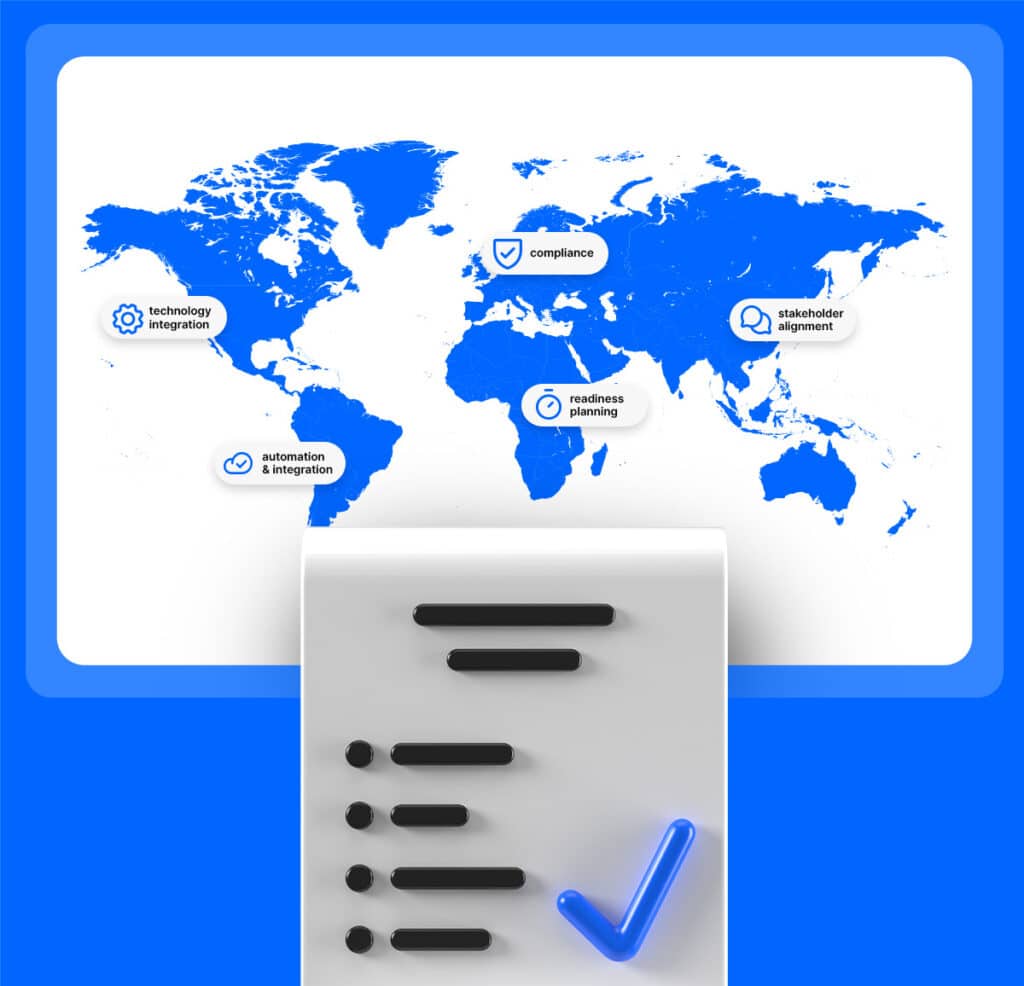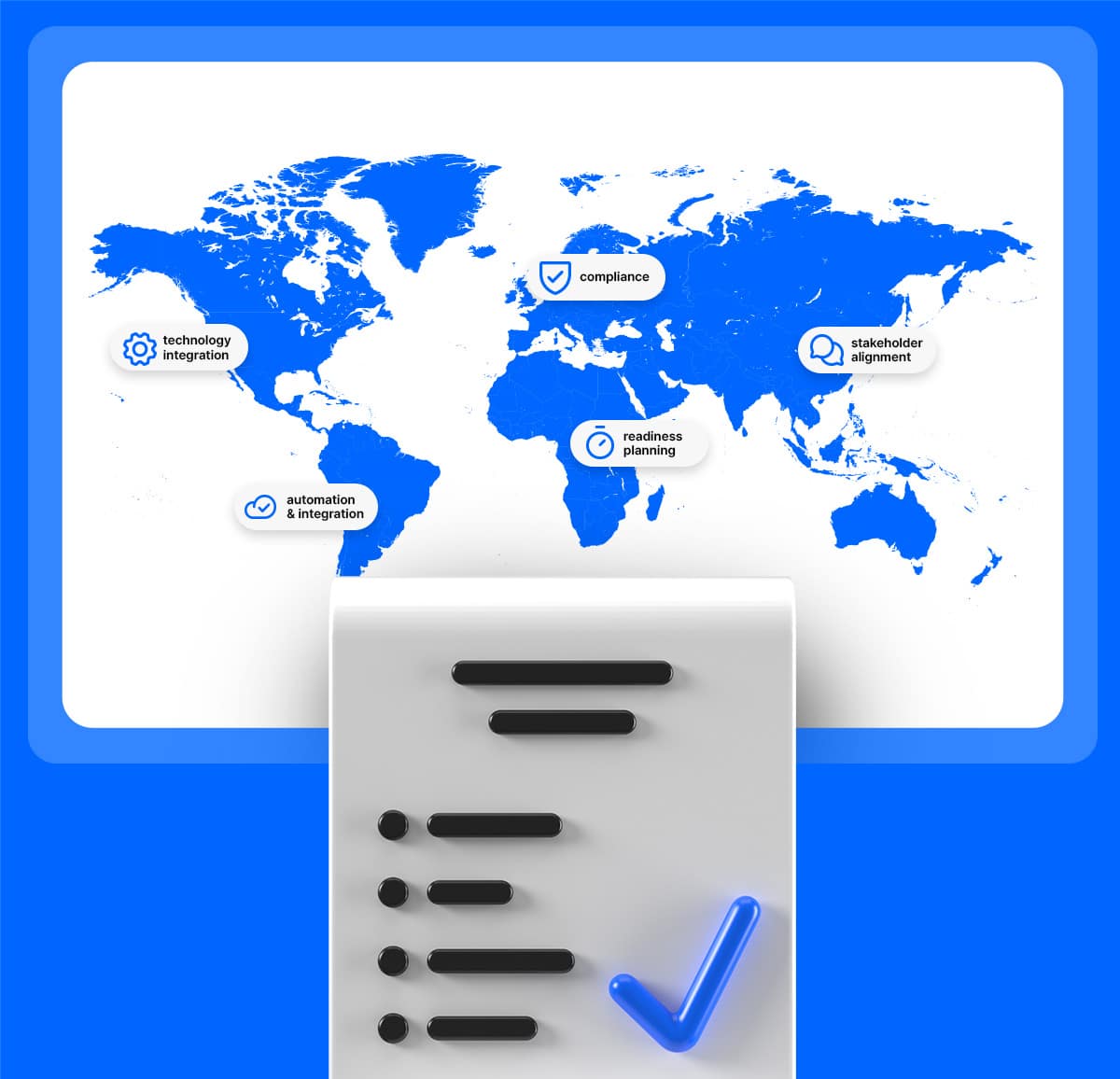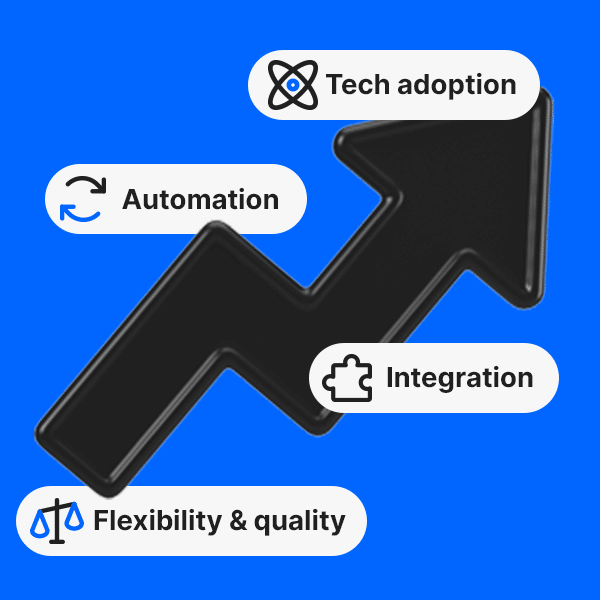It’s easy to view payroll as “hire them, pay them”. But for midsize businesses pursuing global expansion, every country has different tax regulations, employment laws and standards that must be complied with. This can quickly turn routine payroll management into a compliance nightmare.
So what can you do to make sure your payroll department is as ready for global expansion as it possibly can be? We’ve drawn on the expertise of our global payroll experts to devise this checklist, so that you can assess your level of readiness, and avoid common mistakes and pitfalls.
Compliance and regulatory readiness
Document compliance requirements
for each target country
For every single new market you want to operate in, you should research and catalog local tax laws, local regulations and employment standards including income tax and payroll tax requirements.
These should be reviewed and updated on a regular basis: for example, Canada has monthly regulatory changes that affect electronic filing requirements, payroll calculations and Employment Act compliance. A living document can be useful for tracking requirements and assigning ownership for change monitoring.
Establish entity registration timelines
and requirements early
In some countries, it can take up to 2-3 months to complete legal entity registrations or ownership changes, and that’s before you can start any payroll onboarding.
This should be addressed at the earliest opportunity, as leaving it until the last minute can cause major delays in payroll implementation.
Proper record keeping and understanding tax obligations from day one is essential for global businesses operating across multiple jurisdictions.
Engage and brief your in-country teams directly
In-country team members need direct access to local expertise, rather than communication filtered through central support channels. That helps local teams understand the transformation process, maintain smooth contact with global payroll providers, and avoids issues around adoption and transition.
Risks of non-compliance increase when global teams don’t have clear guidance on local regulations.
Technology and data integration assessment
Audit your current data sources
and integration capabilities
Every system that feeds payroll data should be mapped, including HCM systems, and platforms for time tracking, employee benefits administration and expense management. As data ecosystems become more complex, you may find you need to work with a vendor offering comprehensive API endpoints and flexible file ingestion options.
Evaluate your readiness for
platform governance and automation
Your chosen platform should include embedded issue tracking, validation frameworks, and communication tools. But it’s important to avoid a focus on individual country capabilities – assessing these capabilities should be global, encompassing core operational needs like how payroll runs are scheduled, how teams communicate, and how issues are resolved.
Plan ahead for ongoing monitoring
and analytics capabilities
Measuring transformation success requires the right systems that can track performance metrics and prove return on investment. These systems can help
move payroll teams away from a ‘set and forget’ mindset, and allow them to use analytics to identify opportunities for improvements, as well as make data-driven decisions about process refinements.
Stakeholder alignment and change management
Create a unified rollout plan
that includes all stakeholders
HR teams, finance, IT and leadership should all be in agreement on implementation timelines and priorities. Having a single, comprehensive plan in place avoids confusion and delays, so keeping ‘single source of truth’ documentation and holding regular alignment meetings can keep everyone on the right track.
Define your success metrics
and business objectives clearly
Do you know what success should look like 12 or 24 months down the line? This could be reduced processing time, improved compliance scores or enhanced employee satisfaction – but whatever it is, it’s essential to have quantifiable metrics in place to measure the rate of progress. This clarity helps keep everyone focused on the right area, and demonstrates tangible value to leaders and senior stakeholders.
Establish clear communication
protocols and escalation paths
Avoiding confusion during payroll processing windows is critical. Teams should know how they will interact during and after implementation, so that internal stakeholders and external partners alike understand roles, responsibilities, and escalation procedures. This prevents confusion during critical payroll processing windows.






